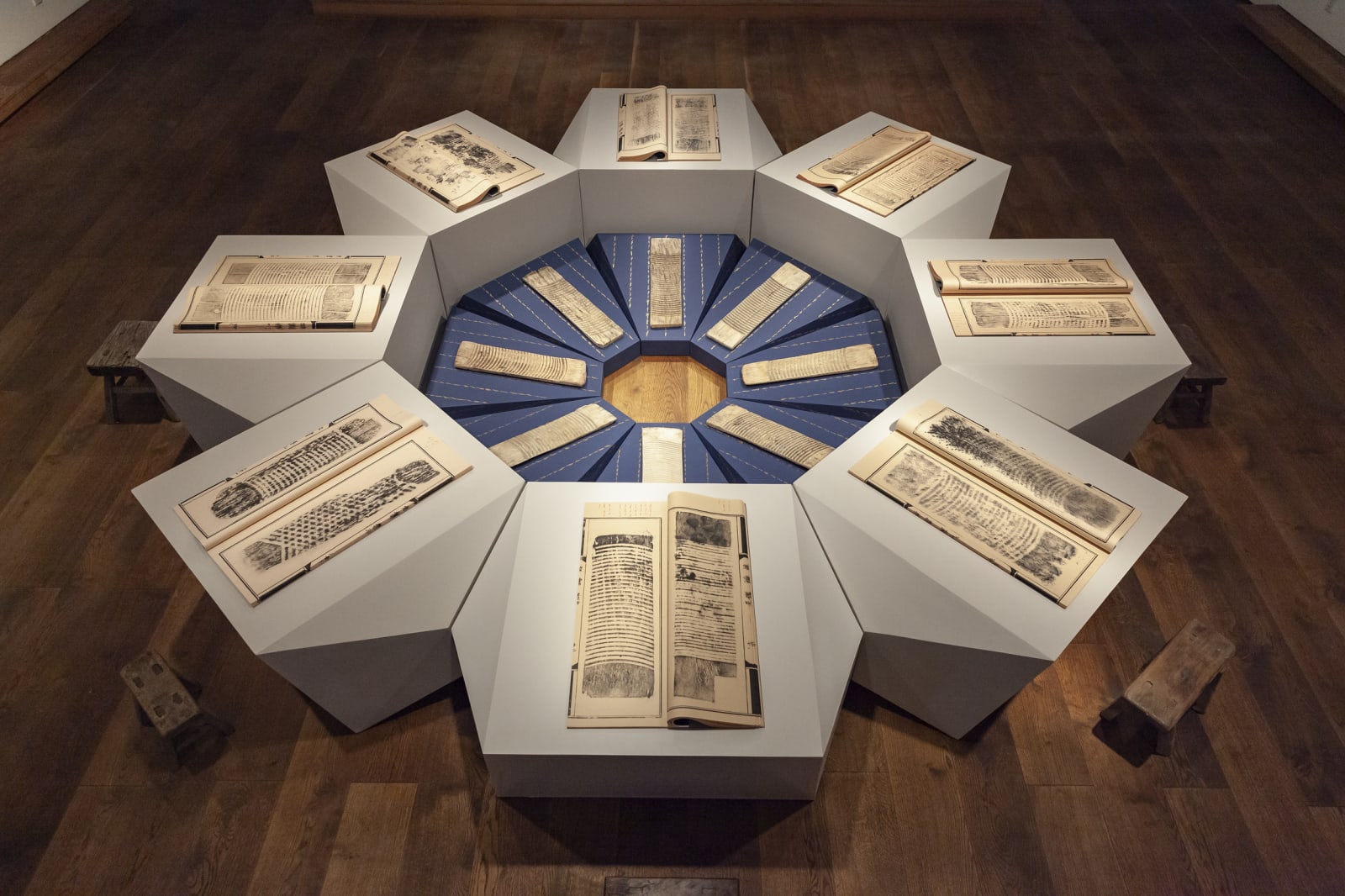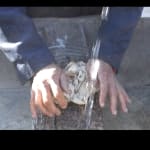Tao Aimin 陶艾民
The Secret Language of Women 女书, 2008
Wooden washboards, ink on paper, thread-bound book, video 搓衣板8块、线装书8本、视频3分20秒
126 x 31 1/2 in
320 x 80 cm
320 x 80 cm
Copyright The Artist
Since 2005, Tao Aimin has created a series of works from wooden washboards that she has collected in the hundreds on repeated visits to the countryside. They have been fractured...
Since 2005, Tao Aimin has created a series of works from wooden washboards that she has collected in the hundreds on repeated visits to the countryside. They have been fractured and deformed by repeated and prolonged exposure to the elements. Once household necessities, they have been now largely supplanted with modern technology, a fate shared by the culture of the women who used them. For the artist, these washboards are the only material evidence of the women’s toil: “I am concerned with the circumstances of women in different eras. Washboards—these ‘artifacts’ submerged for years in water—are symbols of the women of a different time, a river of life witnessed by countless women in history.”
In “The Secret Language of Women” (2008), Tao Aimin began using washboards not directly as found objects, but rather as printing blocks to create rubbing impressions on xuan paper. She thus engages the traditions of calligraphy, woodblock prints, and epigraphic studies—the study of ancient languages as a rigorous basis for the interpretation of classical texts. In “Women’s Book” (2005), she collects such rubbings into classical string-bound volumes and inscribes them in Nüshu, a syllabic script invented by women of Jiangyong County in Hunan to transcribe their local dialect. With these counterfactual artifacts, Tao Aimin posits an alternative literate tradition—unfamiliar to us not because it is fictive or imaginary, but because it has been suppressed and confined to the margins.
In “The Secret Language of Women” (2008), Tao Aimin began using washboards not directly as found objects, but rather as printing blocks to create rubbing impressions on xuan paper. She thus engages the traditions of calligraphy, woodblock prints, and epigraphic studies—the study of ancient languages as a rigorous basis for the interpretation of classical texts. In “Women’s Book” (2005), she collects such rubbings into classical string-bound volumes and inscribes them in Nüshu, a syllabic script invented by women of Jiangyong County in Hunan to transcribe their local dialect. With these counterfactual artifacts, Tao Aimin posits an alternative literate tradition—unfamiliar to us not because it is fictive or imaginary, but because it has been suppressed and confined to the margins.




